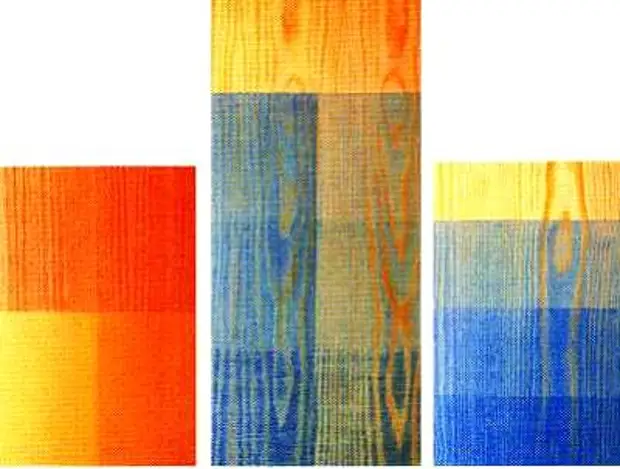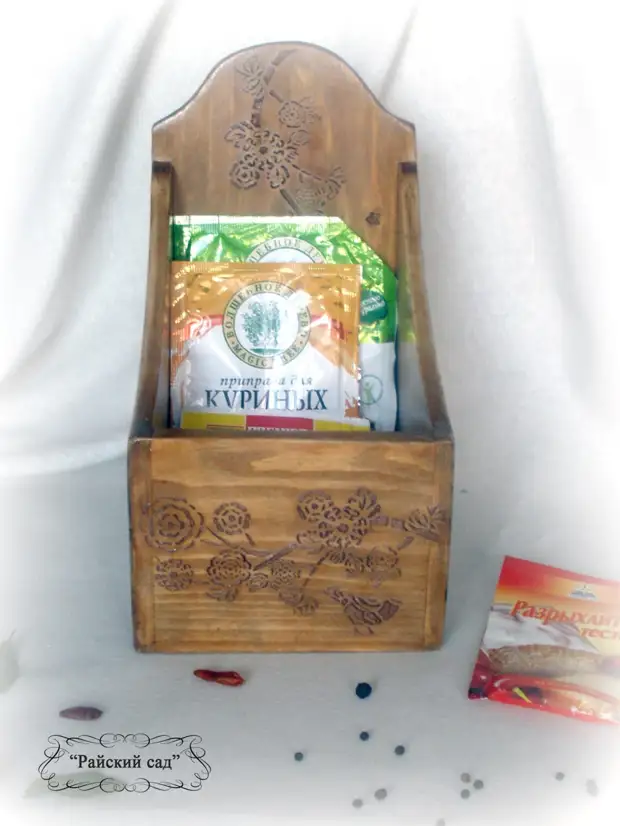
Master class on the lesing "box for spices" flavors ".
Fasteling the surface of the tree and decoupage.
I am glad to welcome you on my page.
All photos increase when pressed.
I try everything and try to find what I have to do. So I took up the lesing of a wooden box. Maybe my experiment and you will like it.
Glaze.
The lesters are called thin, transparent and translucent layers of oil and other paints, applied to others, well already ashamed of the same paints, to apply the last desired intense and transparent tone.
Preparation of material.
I made a blank box for spices from a tree. I wanted to emphasize the beautiful texture of the wood. I took a napkin, acrylic paints, Wet Wash Morners and Oak, Acrylic Varnish for the Sauna "Poli-R" and everything else that relies emery paper, brushes, foam rubber, stencil, putting on wood, Mastichein, water, PVA glue , hair lacquer, iron. Everything did with a good mood.
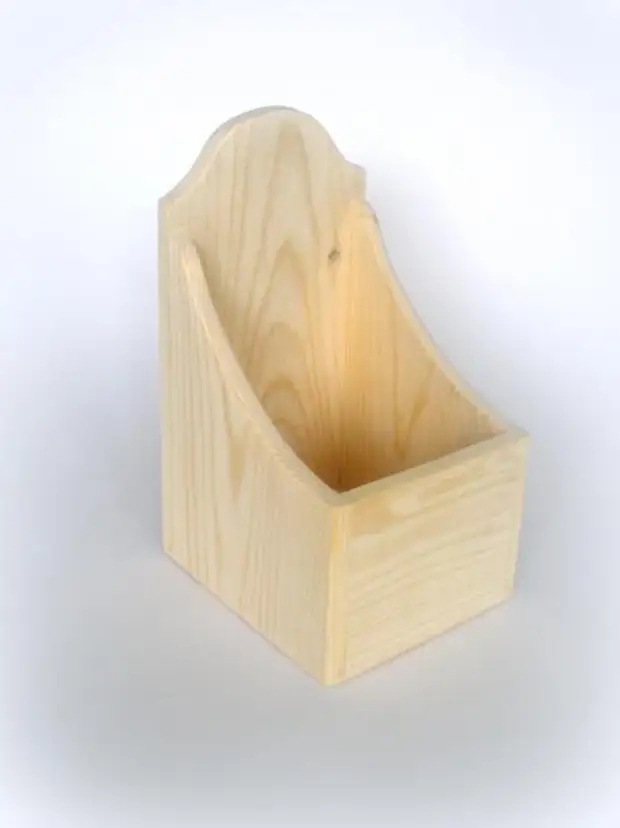
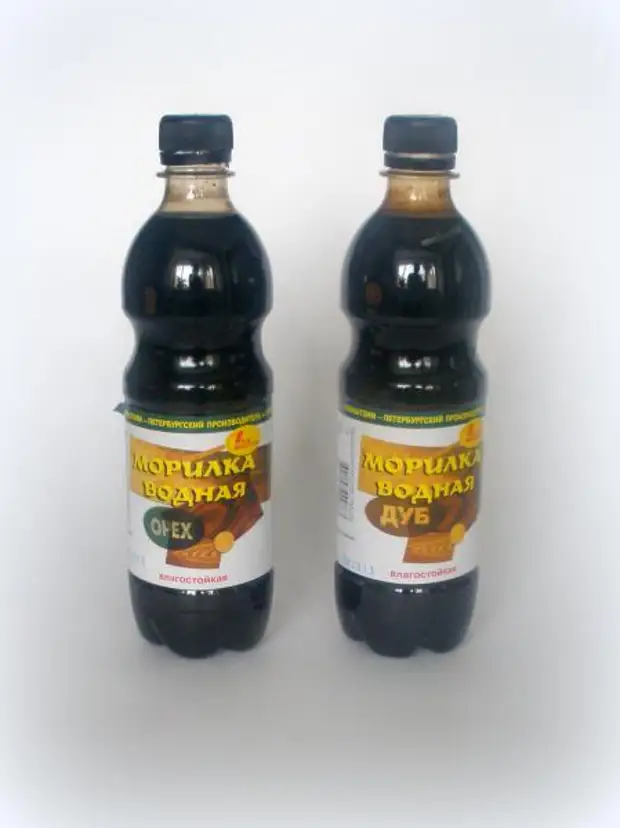
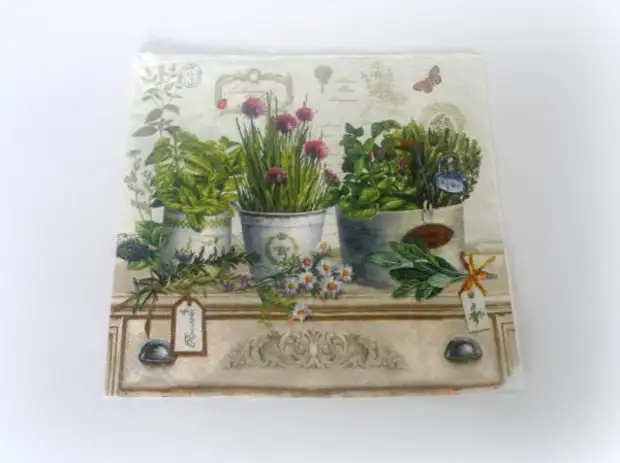
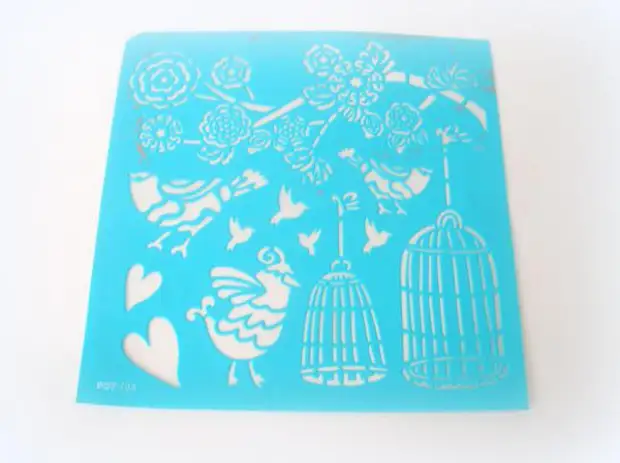
The main stage.
one. The first thing is a bit sliced the workpiece of sandpaper No. 240.
2.. Divaled in a small cup of a little morone "Oak" with water, proportions 2: 1. I was afraid that the color would be dark. I tried on a separate board. Color made me. This diluted versa walked throughout the box.
The box is good I have a mischief, and I blew it out with sandpaper No. 400. Removed the upper layer of paint and protruding fibers of the tree. The tassel scolded dust, rubbed with a rag and admired the result of the Okurization.
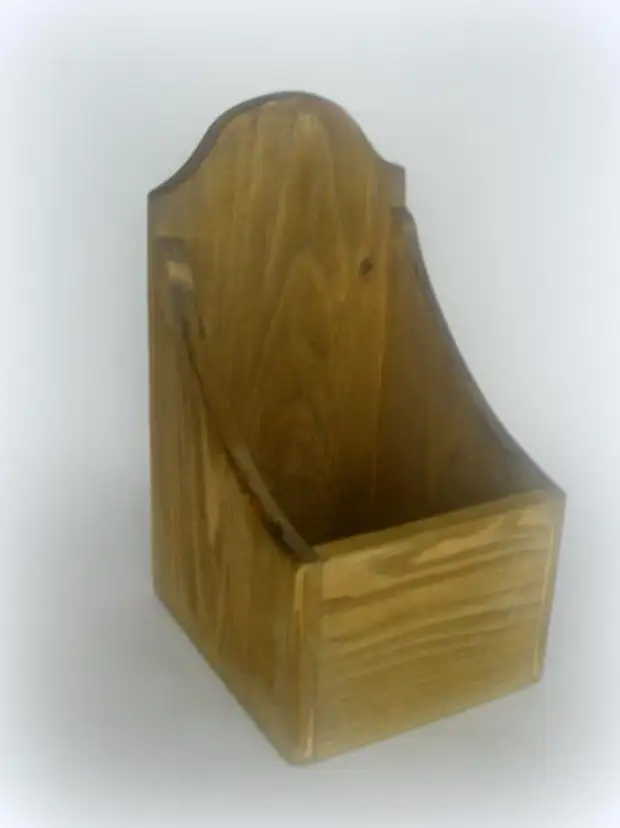
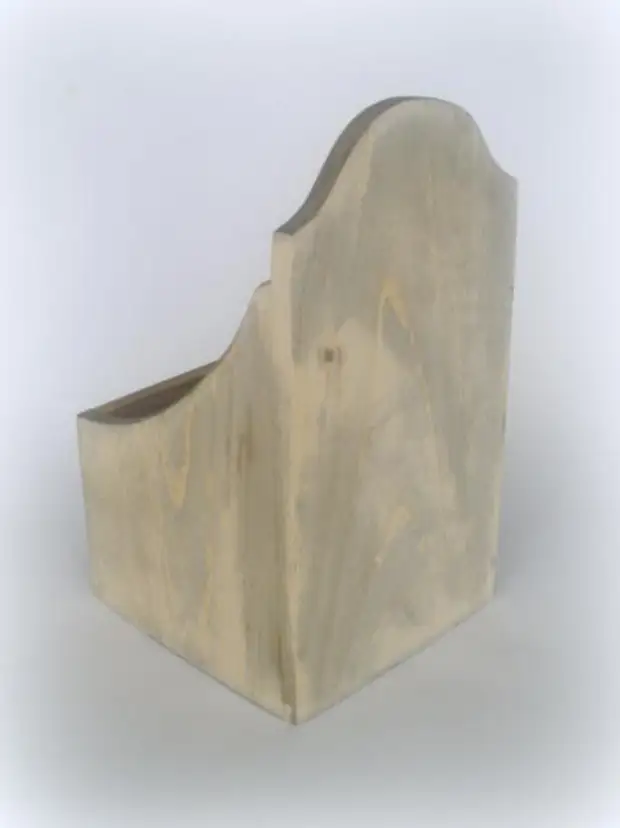
3. Poured in a cup of the "Walnut" simile and walked over the entire surface. Gave well to dry and looked at the workpiece. Where it was dark, and again went emery paper. I liked overflows and the resulting texture. If you wish, you could still add color, but there was no other vehicle with a suitable thing and what happened to me, I had to do. Covered 4 layers of varnish. Overlooked sandpaper No. 600.
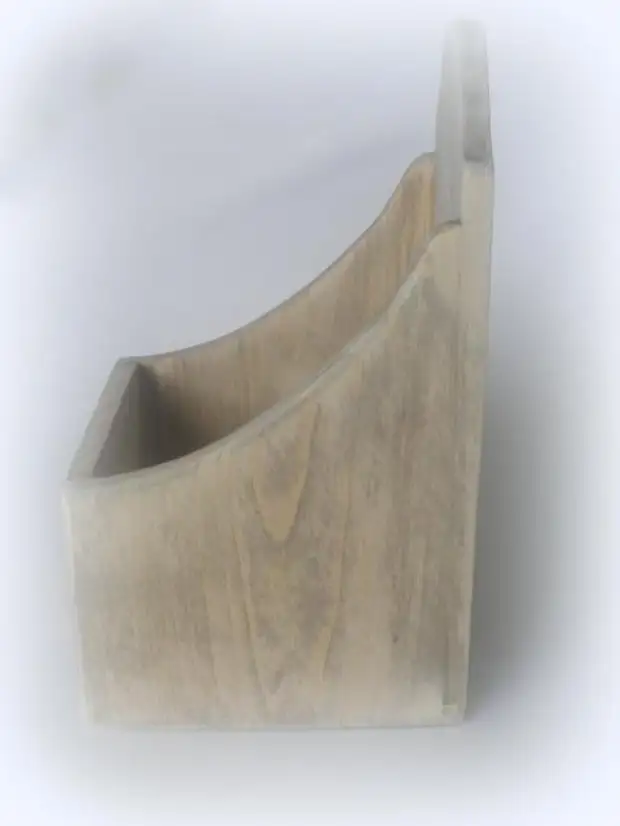
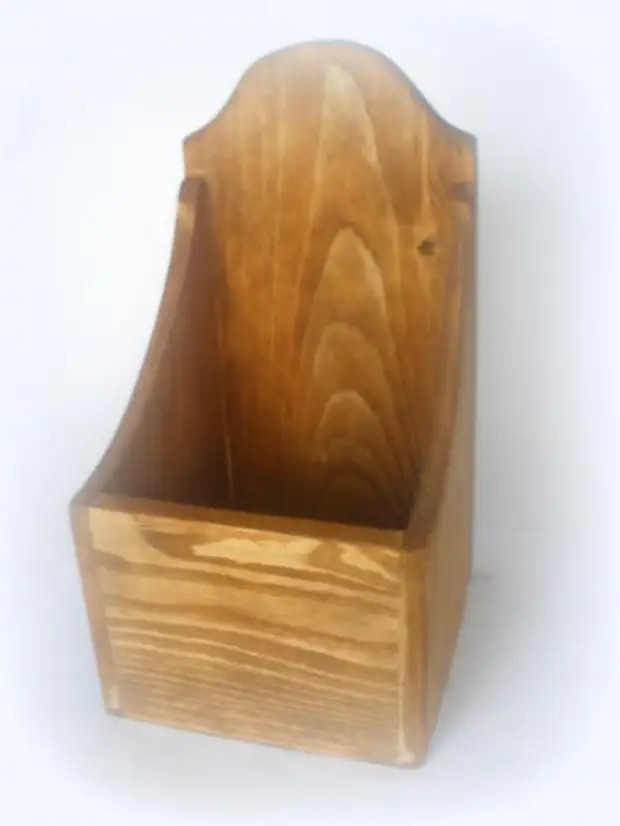
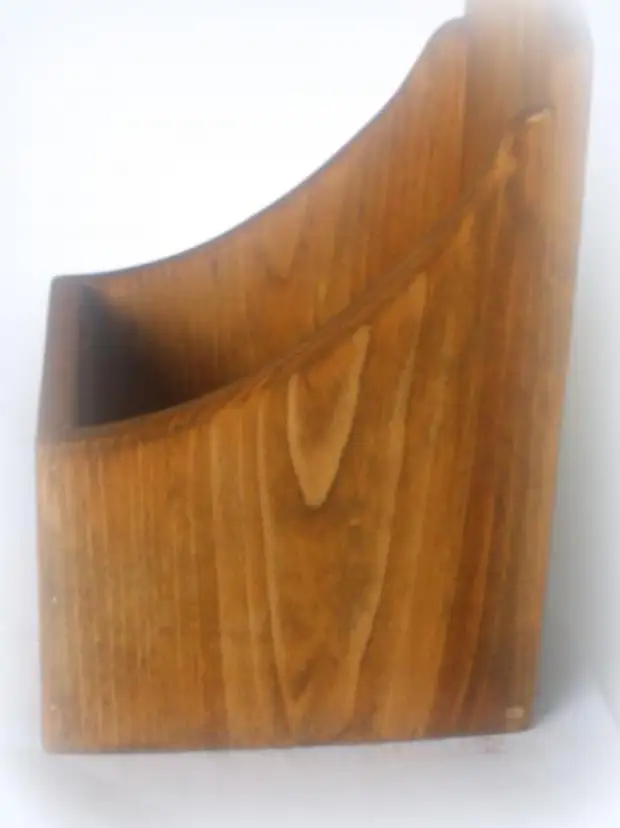
four. Next took the sides. Since I wanted to save the texture of a tree, I did not paint a completely white paint sides of the box. On the palette spread acrylic varnish with her whites and lustered the Boca box. It turned out a tender haze, what I needed.
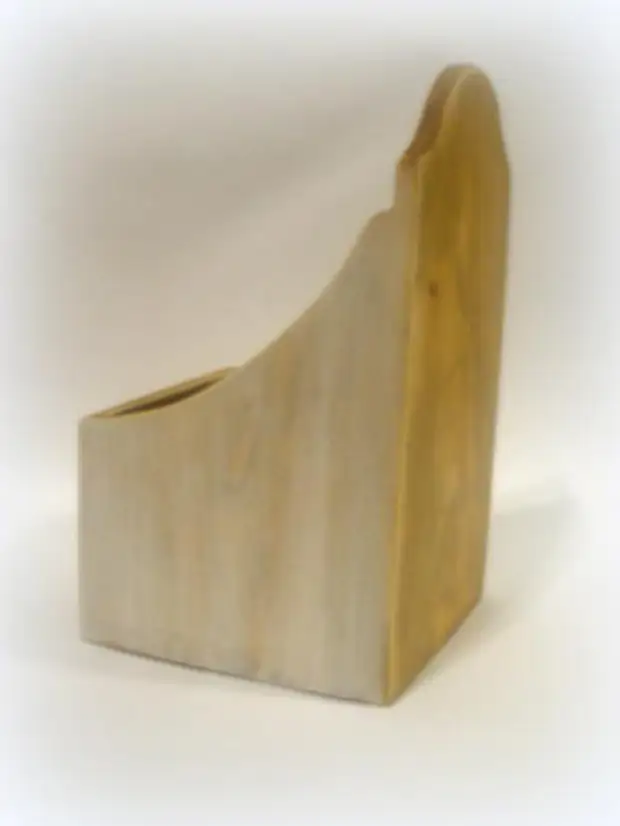
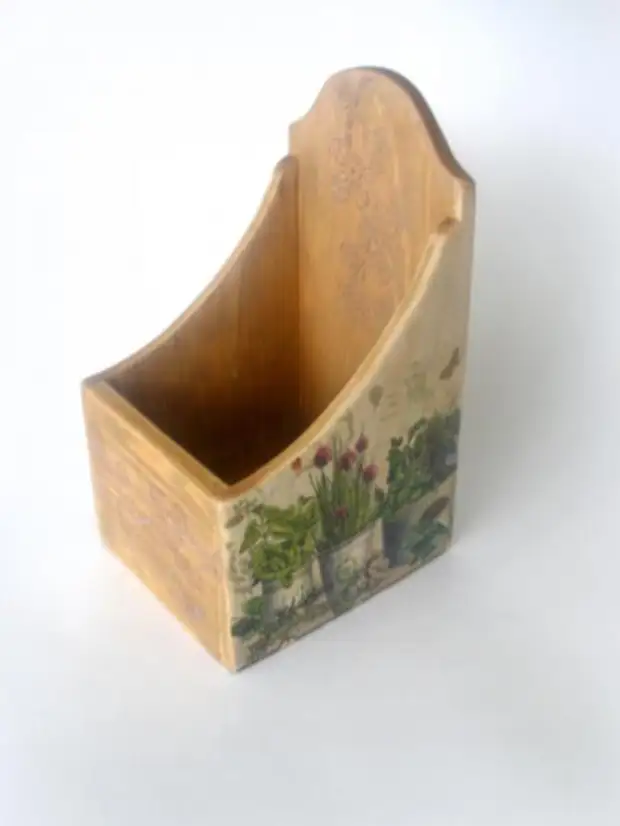
five. Then sprinkled the napkin with the front side of the hair varnish at a distance of 30-40 cm. Dials dried with varnish and stored the napkin iron. The edges were leveled, and she became smooth and smooth. The file glued the napkin to the edges of the box using PVA glue. When the napkin dried, covered it with 5 layers of acrylic varnish. Every layer gave a good dry. Okarila emery paper number 800. Again, 5 layers of varnish over the entire surface, Okarila the emery paper No. 1000.
The final stage. Decorating a box.
6. I like to decorate your work with bulk elements. Mixed in a plate putty on a tree with acrylic paint and got the desired coffee color for my work. Using the stencil of the masticine, caused volumetric elements. When the pattern is dry, leveled it with sandpaper No. 500. Passed by varnish 3 times. Well stretched varnish, so as not to stay between the elements of the pattern. If it remains, there will be white leaks. Still covered with varnish the entire box.
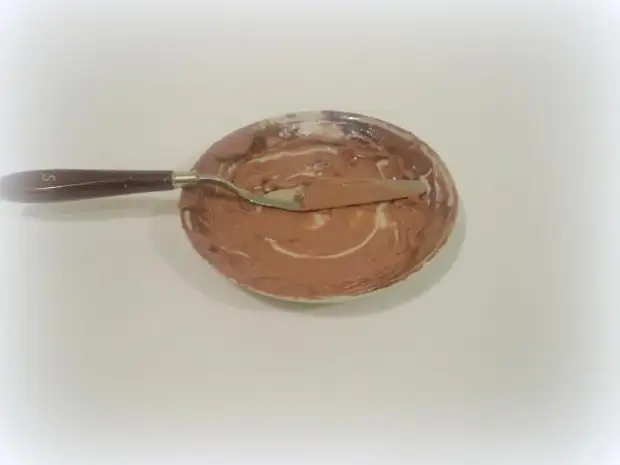
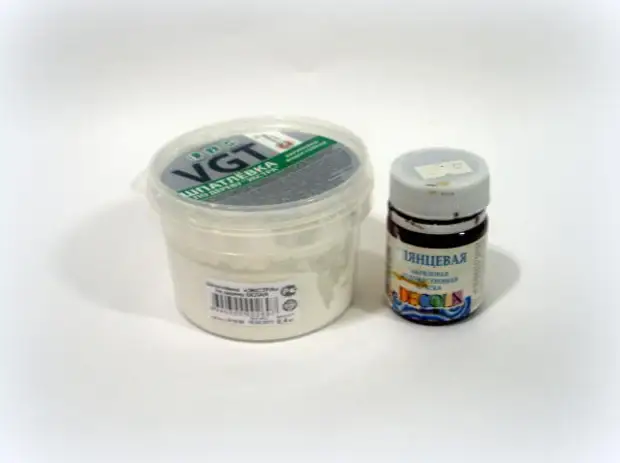
7. On the wall of the box made a screen drawing, using two colors: brown and gold. In places caused brown paint, and then at once from above in other places gold. Great, in the sun shifts.
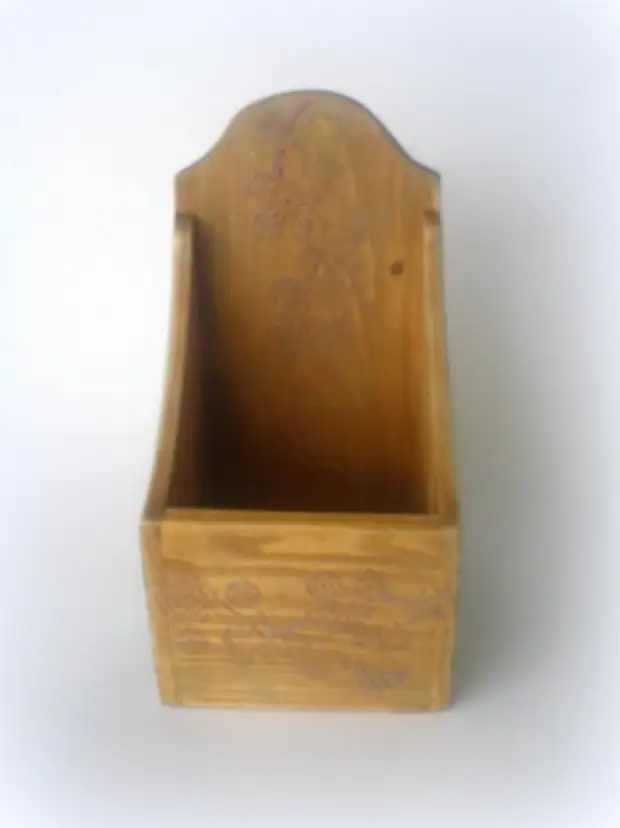
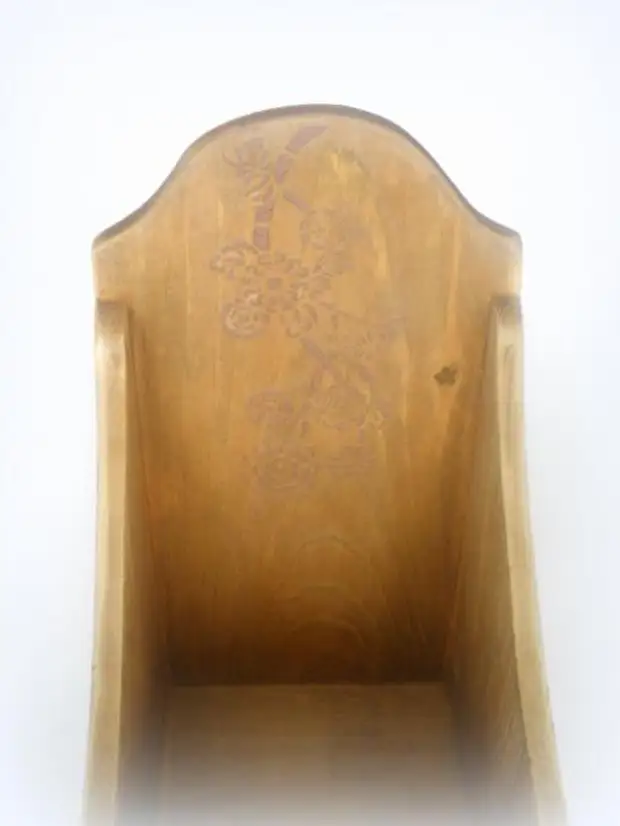
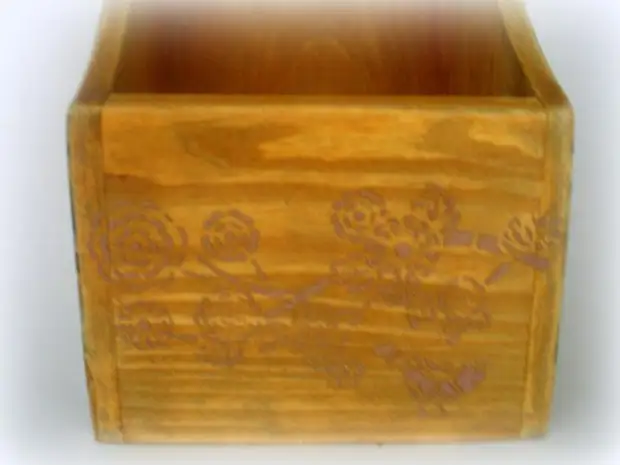
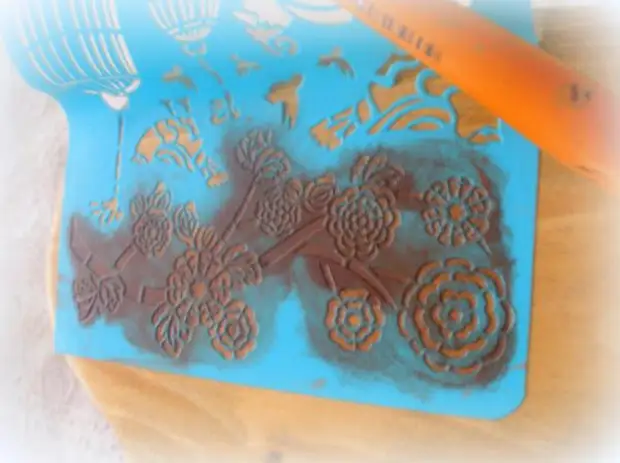
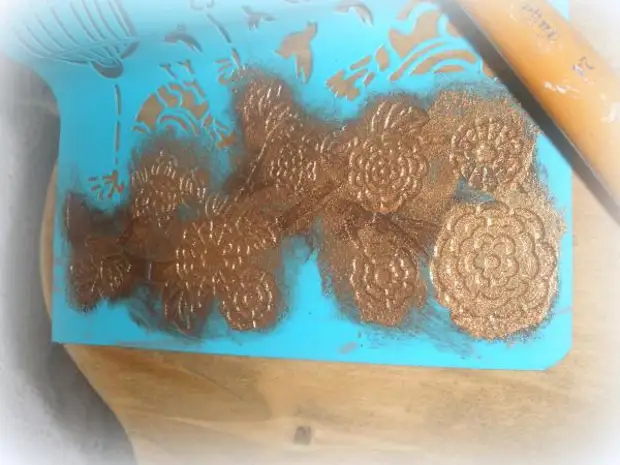
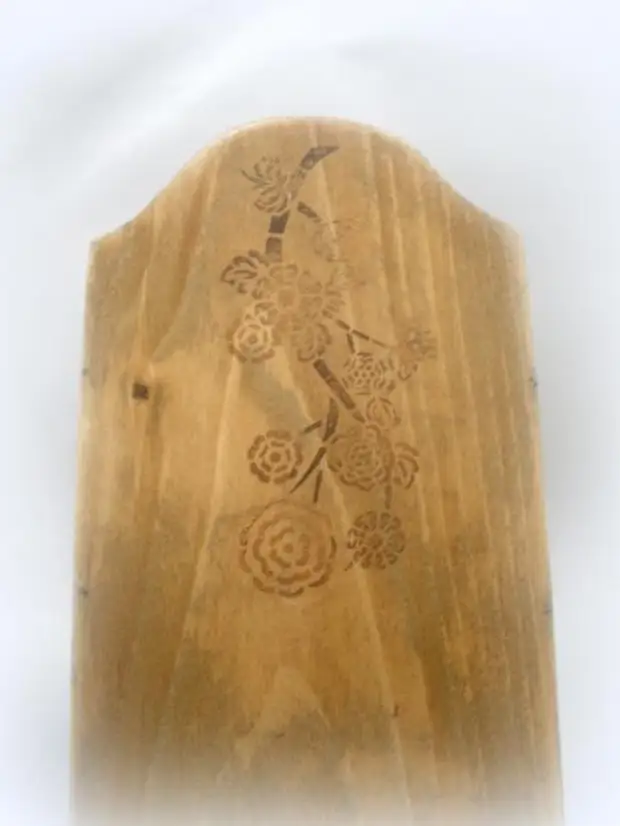
eight. Volumetric elements I also decided to allocate. Initially, a dry brush was white paint, gave dried covered with varnish, and then slightly bitumen. Bitumen I went through all edges of the box.
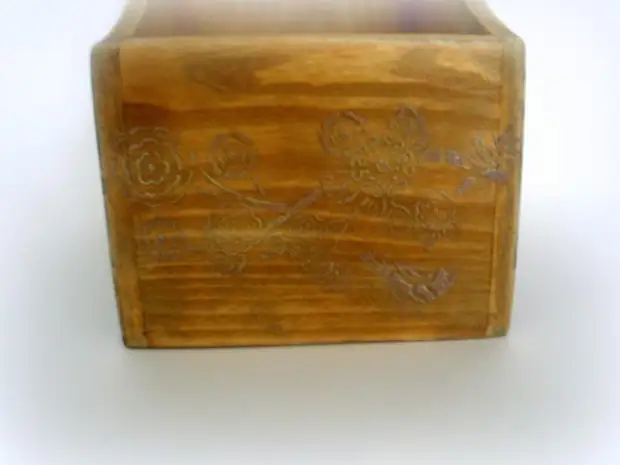
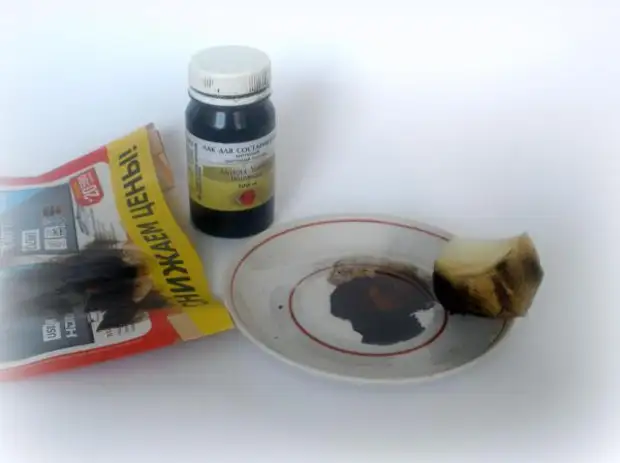
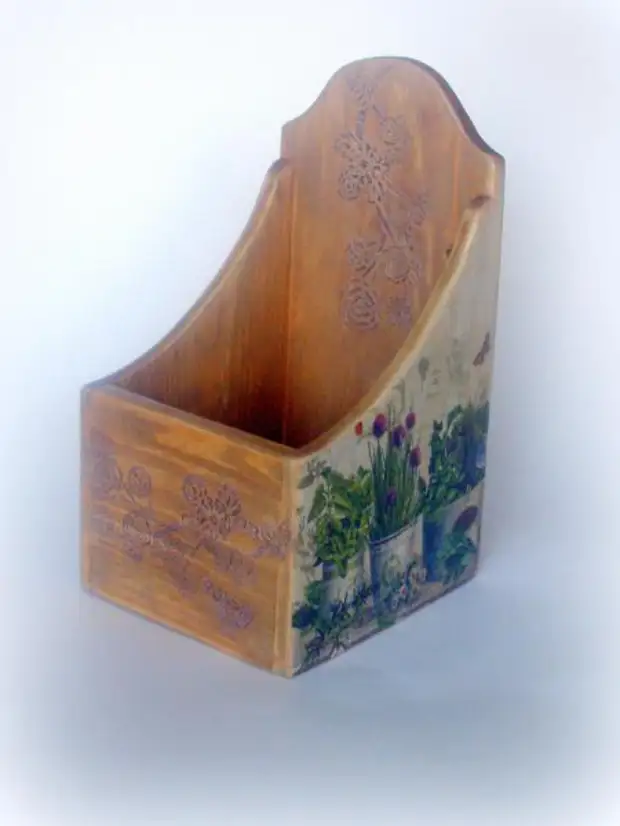
nine. Covered lacquer and squeary sandpaper. In general, I got 30 layers of varnish.
I really liked my box. In the daylight, a multi-colored lousy texture is seen.
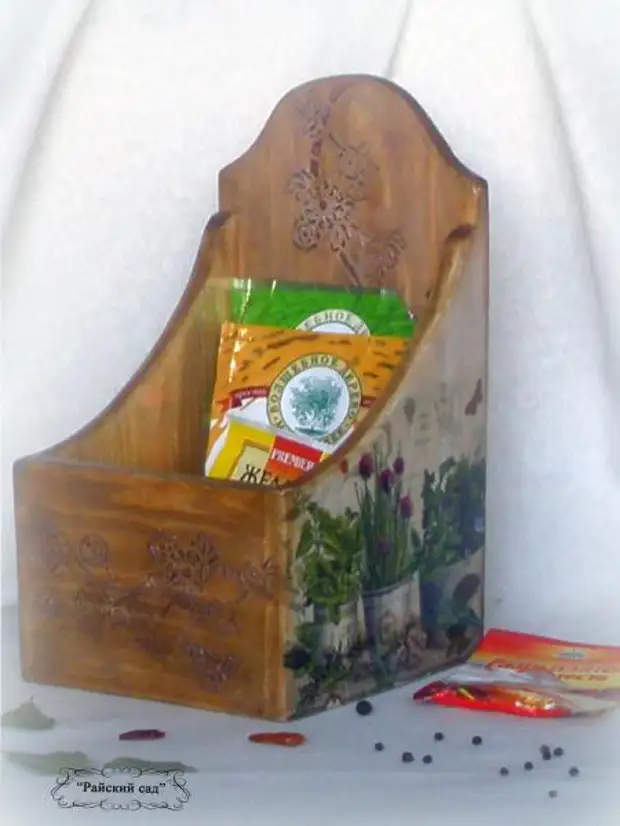
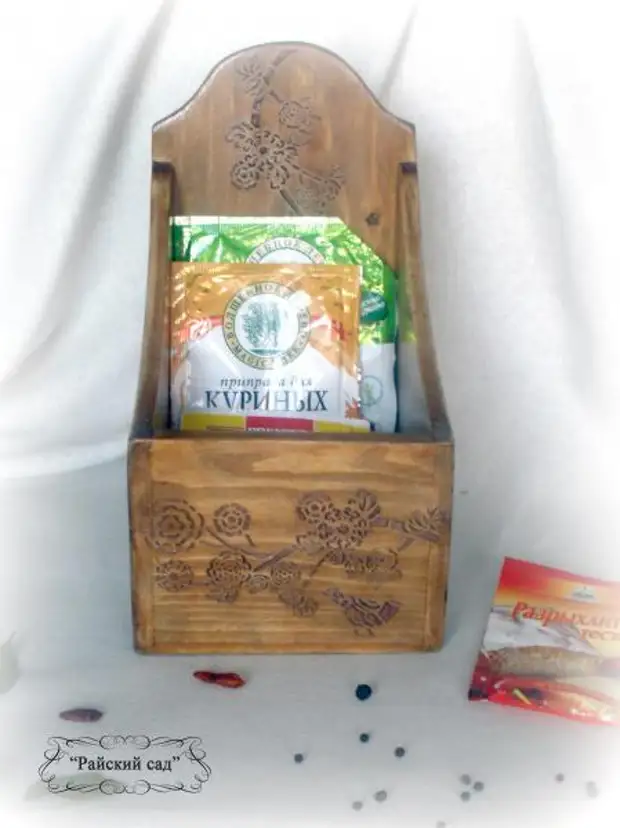
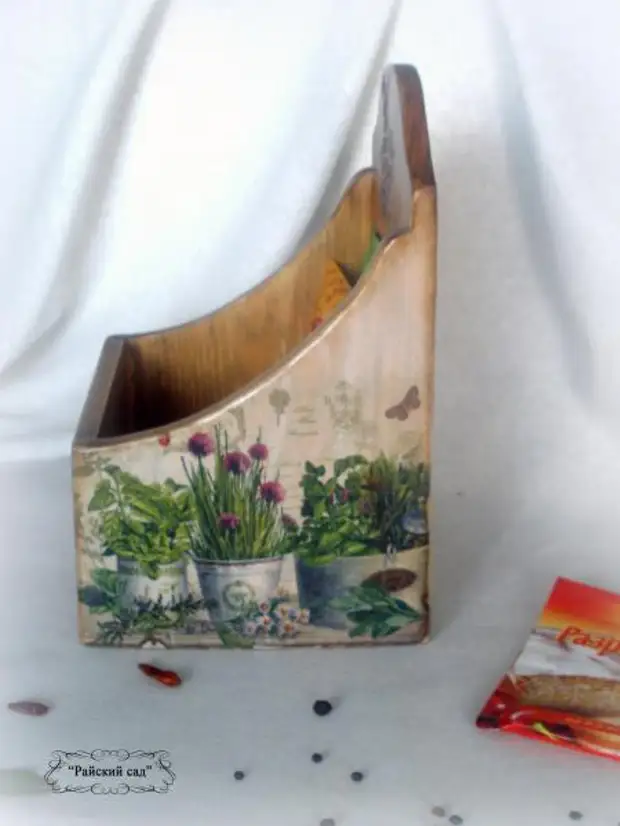
The box "Sunflowers".
Made another box. Here I used acrylic paints for lesing. Initially, I spread the yellow paint in the water and went through the parts you need. Gave dried and Okaril also emery paper. Then the blue paint went into the move. Well spread with water. Received a gentle blue shade. From above, yellow paint he gave green. Again, gave dry, went out by sandpaper, removed a little top layer. Again she painted in the right places with yellow diluted paint. It turned out a transition from a dark yellow color to tender sunlight with gentle green grass overflows.
Volumetric elements and bitumen formation. That's the second box is ready.
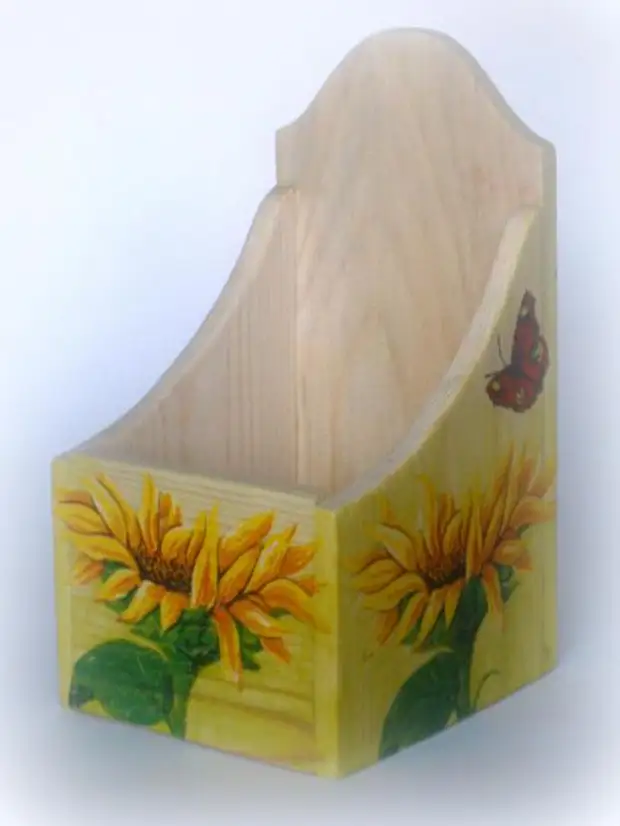
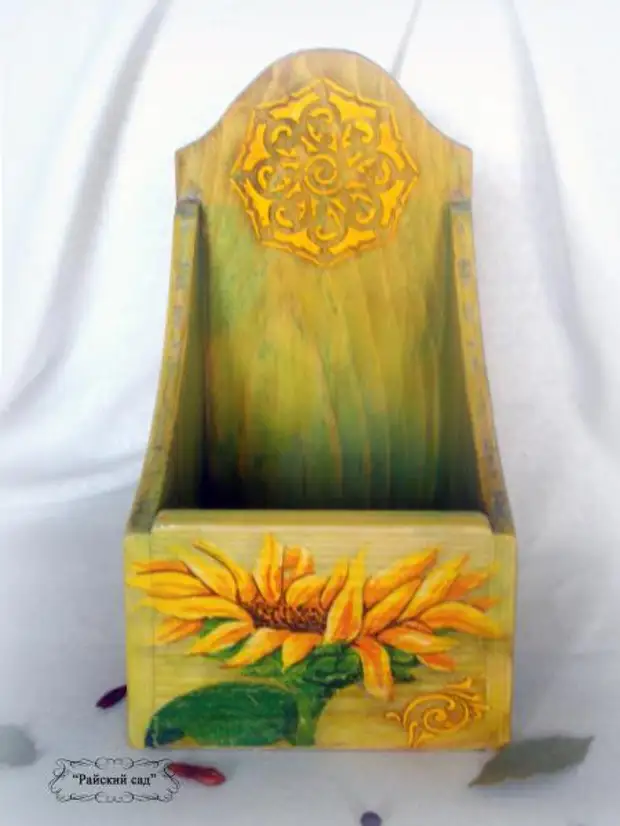
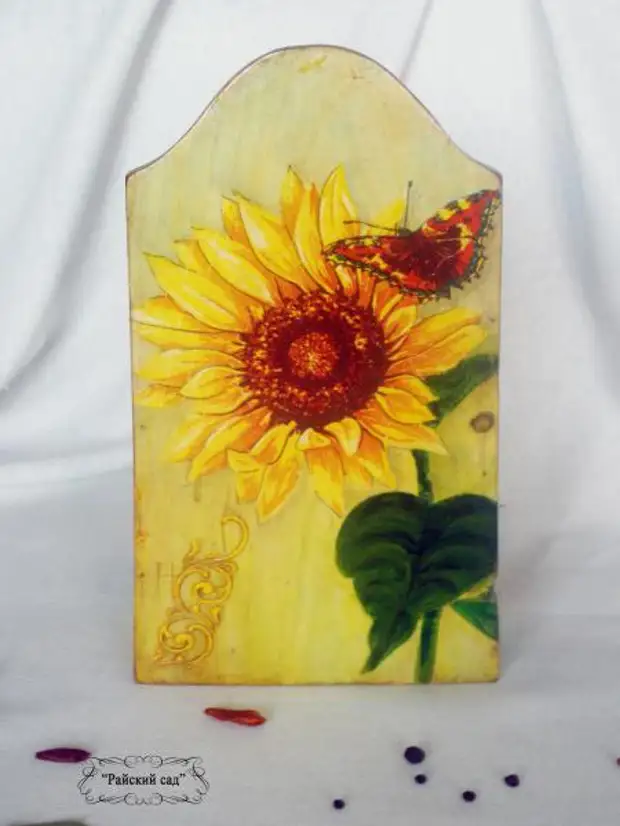
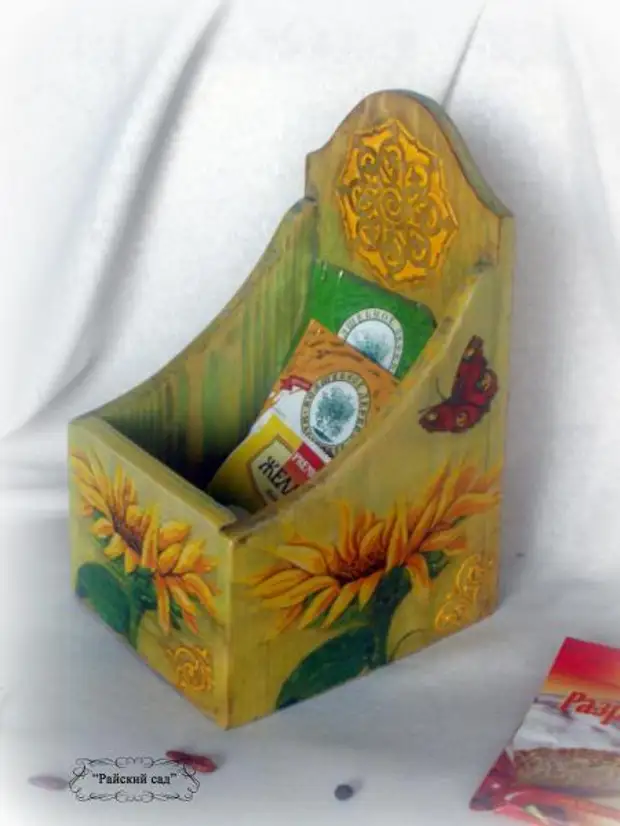
Helpful information :
Almost all the paints are suitable for lusters: Some for transparent, others for translucent.
Less than suitable include: cadmium, kinnayar, Napletite yellow, English red, Caput-Mortum, black cork and peach and some others.
The main line of laying is the more such layers, the expressive in its diversity becomes the texture. Such a complex combination of layers allows to achieve an unusually beautiful effect, giving the work of depth and shine.
Lessees can be supplemented or finished almost any one way or another launched painting.
Working lescing, you should always keep in mind the following:
- luster both whole paints and mixing them;
- You can lose weight both to achieve a brighter and stronger tone and repayment of screaming paints;
- The more tenderly on the tone of the lesing and what it is lighter, the more brighter preparation it should have. In dark preparation, on the same basis, it is possible to obtain only dark and deep lescing;
- lescing can be applied one to another many times;
- Smooth imposition of non-lousy paint is achieved with the help of a brush, a piece of silk matter, hand palms, etc. thick lesters are spilled with the help of a "flirta" - abundant hair with a soft brush, specially serving for the named goal;
- lesters also need to dry;
- With a too large number of lesters, the texture darkens if there was a lot of paint:
- Failed lescing are removed from the surface of painting with bread and cotton crumbs;
- The lesters are well falling only on foaming with a smooth surface, and therefore, if you wish to lush the grungy foaming, it must be grinding.
Lesseed in old masters were of great importance. Titian, Rembrandt, Velaskez, their contemporaries and other wizards of earlier time perfectly used them in their painting. The popularity of the lescing in the past epochs indicates that they can not be better than the picturesque requests of artists who used them.
Here is a scheme where you will see what color it turns out when attaching different colors of acrylic paints.
